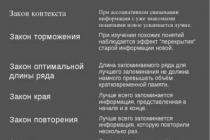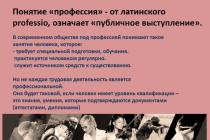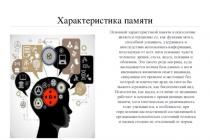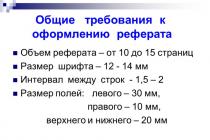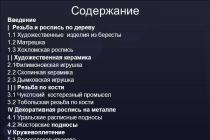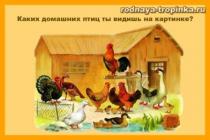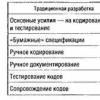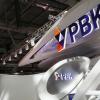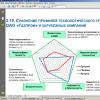We have already written about the demand for eurofirewood. It's not only the new kind fuel for our country, and profitable business. Today we will consider what equipment for the production of eurofirewood will be needed for an entrepreneur who decided to open his own business using this idea.

How to start the production of eurofirewood?
Eurowood burns for a long time and they are able to maintain a high temperature for a long time. When burned, they do not form sparks, and the ash can be used as fertilizer in the garden. The population will be the main consumer of the product.
What equipment to choose for production?
Equipment for the production of eurofirewood is:
| Crushing equipment | In the crusher, raw wood is crushed. It goes through two stages. First, it is affected by a serrated knife. Then an additional cutter grinds it again. All crushed mixture is passed through a special sieve. The maximum raw material can have a size of 200 mm, and its minimum fraction is no more than 3-5 mm. |
| Dryer | In the installation, the sawdust is dried until a moisture content of no more than 12% is reached. |
| Briquette Forming Machine | In it, under the influence high temperature crushed raw materials - pressed. The finished product has the shape of a polyhedron, with a hole along its entire length. This form allows them to be used both in ovens and on an open fire. Storage and transportation of eurofirewood is simplified. |
Drying equipment
Briquetting is impossible without high-quality drying of raw materials. We will consider a complex that is suitable for processing not only wood, but also any plant waste. In general, there are several types of equipment:

As an example, we give the pneumatic dryer SP-01. It is a battery of pipelines that are connected in series with each other. They are supplied with preheated air. The speed of its movement is 15-25 m / s. Raw materials are lifted by air flow, warmed up, and then separated in a special centrifuge. This is the principle of operation of the cheapest drying units. Below are specifications such a setup:
Forming equipment
A dryer with such a capacity can be supplemented with a briquetting press PB-48. With it, you can form any raw material from plant waste, the moisture content of which does not exceed 14%. The process occurs due to hard pressure on the crushed raw materials, under the action of high temperature. The output is a continuous sleeve. When delivered, the press kit includes a control panel and a cooling unit. finished product. Main technical characteristics:
The cost of the press is about 10 thousand dollars. The manufacturer usually gives a guarantee for the equipment, offers its installation and commissioning. Most often, these services are already included in the cost of the product.

Fuel briquettes or, as they are often called, eurofirewood, are modern look fuel used to heat residential buildings, baths, temporary structures, outbuildings, etc. They are dry and dense, due to which they burn longer than ordinary firewood, while releasing much more heat. In addition, they are environmentally friendly - production fuel briquettes carried out mainly with the use of woodworking and agricultural waste. Due to the listed qualities, eurofirewood is widely used in Lately, and their production has become profitable idea for business.
The relevance of the idea
Economical, environmentally friendly, easy to store and use, high efficiency- these are the main reasons for the growing popularity of these materials both in Europe, where they were invented, and in Russia.
The heat transfer of such fuel is 1.5 times higher than that of wood. One ton of eurofirewood can replace one ton of coal, but at the same time, briquettes are more compact and do not spread unpleasant odors, smoke and soot during combustion.
The cost of fuel briquettes, depending on the type of product and raw materials, averages from 4500 rubles. up to 10000 rub. per ton. Given that they are made from waste, and current expenses manufacturers are reduced mainly to paying for the electrical and thermal energy necessary for the operation of special equipment, the eurofirewood manufacturing business can be called one of the simplest and most inexpensive to maintain among all areas of the manufacturing sector.

The Russian market for the production of fuel briquettes is export-oriented. The main buyers are European countries: Denmark, Sweden and Norway. The geography of sales is expanding, at the same time, domestic consumption of briquetted biofuel is also growing.
Installing a line for the production of fuel briquettes at a woodworking enterprise (for example, if it is used as the main direction) can effectively solve the problem of waste disposal, expand the range of products and provide its owner with a good additional income.
But even if the raw materials for the manufacture of such products have to be purchased, and I must say that the cost, for example, of two tons of wood waste required to produce one ton of briquetted fuel is about 400 rubles, this can be very profitable.
The World of Business website team recommends that all readers take the Lazy Investor Course, where you will learn how to put your personal finances in order and learn how to earn passive income. No enticements, only high-quality information from a practicing investor (from real estate to cryptocurrency). The first week of training is free! Register for a free week of training
Product types
There are three main types of eurofirewood, differing in shape and manufacturing features. Each species is named after the manufacturer that first put it on the market. Types of fuel, arranged in ascending order of price:
- briquettes Nestro ("Nestro") - have a cylindrical shape, length from 5 to 10 cm, diameter from 5 to 9 cm. May have a radial hole. Produced on hydraulic and shock-mechanical presses;
- Ruf briquettes ("Ruf") - have the form of bricks with a size of 6 × 7 × 15 cm. They are made from sawdust and other waste of soft and hard wood using hydraulic presses, do not contain chemicals;
- briquettes Pini-Kay ("Pini-Kay") - have an elongated shape, in section they resemble polygons (with four or six faces) with a radial hole. Produced on screw presses, undergo mandatory heat treatment. The most durable and resistant to moisture, so they are more expensive.
The technology of production of fuel briquettes is based on the pressing method. Substances used as raw materials are compacted under pressure from 300 to 1100 bar (depending on the type of briquettes), liquid is squeezed out of them and the required shape is given.
The most common material for obtaining such products is crushed wood waste (sawdust, wood chips, chips). Sunflower seed husks, rice and buckwheat husks, and straw can also be used as raw materials.
It is useful to know how profitable. Material sales market, manufacturing technology, production equipment and profit forecast.
With this machine, you can briquet woodworking waste, which can later be used for burning in both domestic and industrial furnaces. It is equipped with a built-in agitator, which prevents the raw materials from hanging.
Pressing occurs due to the action of a hydraulic pump, which is driven by an electric motor. The machine for the production of fuel briquettes VR-20A is equipped with a clamping vice adjustment system, with the help of input guides, the required compression force is set. In addition, this press is equipped with a briquette burning device, which makes it even more durable. The estimated cost of the device is 270,000 rubles, the maximum productivity is 15 kg. finished products at one o'clock.
Business planning
It is advisable to start the opening of a mini-factory for the production of fuel briquettes with a business plan. It is better to order a full feasibility study of the project from specialists. An example calculation economic indicators you can also compile it yourself by collecting certain data for your region: equipment prices and its technical characteristics, cost of raw materials, cost utilities etc.
Approximate data for calculating the profit and payback period of the project are given in the following table:
Production costs for 1 ton of briquettes
Raw materials (2 tons)
Electricity (100 kWh)
Thermal energy (1 MW/h) + price of dry wood waste
Salary (2 employees per shift at a rate of 20,000 rubles / month with taxes)
Productivity per month for one-shift operation (0.5 t/h × 8 hours × 21 days)
Capacity per year (84 tons × 12 months)
Minimum selling price
Revenue per month
Revenue per year
RUB 5,040,000
Profit per month
Profit per year
RUB 3,618,720
IN modern world sawdust briquettes, as one of the types of heat carriers, are not widely used among the population. High cost is the main argument. As a result, some people think about self-manufacturing special equipment at home or in the country.
Most will agree with the fact that sawdust pellets are one of the best and most effective types. solid fuel which can be used to warm up the house. Of the obvious advantages, their high calorie content, ease of use, as well as a very low ash content, stand out.
Moreover, raw materials for the manufacture of briquettes can be purchased at a ridiculous price, or production waste from woodworking enterprises can be used for this purpose.
Examples of some of them:
- Sawdust;
- Parts of boards;
- Wood;
- Straw;
- Tree branches and dry leaves;
- Cardboard, paper.
The production of this type of briquetting heat carriers is very profitable from both financial and environmental points of view.
Manufacturing technology
The principle of manufacturing such fuel pellets is not difficult. First, the raw material is dried, and then placed in a special device - a briquette machine.
There are two ways to make your own sawdust briquettes:
- Heat treatment and pressure. These two methods are used in production in order to obtain high-quality products at the initial stage, as they allow you to create a strong outer layer and maintain the density of the workpiece.
- Pressing raw materials. This production method is good for completing a small workshop for the manufacture of fuel briquettes of various shapes with your own hands.
Equipment for the production of fuel briquettes
There are special briquetting machines for efficient disposal of biological waste products. Firewood, sawdust, dry grass, sunflower husks are the main raw materials. The final product is a strong briquette, which is also called eurofirewood.
Types of devices used for the production of fuel briquettes:
- dryer, used to dry raw materials;
- crusher, crushes into fractions of approximately the same size;
- Granulator;
- Device for making briquettes of various shapes and sizes.
The stage of preparation of raw materials must be given Special attention. Humidity should be kept to a minimum.
Manufacturing machine - working mechanism
The machine for making sawdust briquettes has several nodes in its design. At the first stage, the raw material is dried, after which it is crushed into small fractions of the same caliber. The final step in the manufacture of fuel briquettes is pressing. If the amount of work is not too large, then you can get by with just one pressing device.
A hydraulic jack, which is mounted on a support frame, will cope much better with this task. In this case, the reference point is directed straight down. A form is attached under it, which is then filled the right material. In order for the final product to have the desired shape, a nozzle should be made and installed for the rod, which exactly repeats the shape of the container for the formation of fuel briquettes.
This scheme for the production of fuel briquettes has some disadvantages:
- Very poor performance. For one full cycle of work, only one product is manufactured.
- Heterogeneity in the density of the material. This is due to the fact that the hydraulic jack is not able to evenly distribute pressure throughout the entire source material that is in the mold.
If you use the technology for the production of fuel briquettes, which is given above, then you can easily heat the house for one heating season.
Raw material calibrating device
This device is used to screen out large particles to the crusher.
After that, the source material is sent to dry.
Dryers
The degree of humidity of the source material is one of the most important parameters in order to obtain briquettes. good quality.
For this purpose, dispersants are used. Their convenience lies in the fact that drying is due to hot smoke.
Presses
On industrial enterprises use presses for briquetting of universal type. The beam is divided by means of a knife located inside the press. There is also a temperature sensor system.
The constituent particles of a fuel briquette are bound together by lignin, a substance released at high pressure and temperature.
Additional mechanisms
To increase productivity and reduce physical stress in the manufacture of fuel briquettes, additional devices should be used:
- Conveyors that feed the raw material to the dryer.
- Bunker for the accumulation of raw materials with a dispenser and agitator.
- Magnets, whose task is to capture and extract various metallic impurities from materials.
- A sorter that performs work due to vibration.
- A machine that packs the finished product.
Video: making sawdust briquettes.
Fuel briquettes from various types of raw materials
Everyone knows that paper burns very well and releases a significant amount of energy. This leaves a relatively small amount of ash. If there is plenty of such waste paper in the house, you can try to make fuel briquettes from it for heating with your own hands. Although doing this is not as easy as it might seem:
- First of all, you will need a significant amount of paper.
- It will need to be somehow crushed into small pieces.
- Then the crushed waste paper should be soaked in water at room temperature and wait until this solution becomes liquid and homogeneous.
- After that, the remaining liquid must be drained, and the entire mixture that remains must be distributed over the forms.
- When almost all the water has evaporated from the mass, it must be removed from the mold and sent to dry in fresh air.
Experienced craftsmen add a little starch to the soaked paper. Some also use paper to make sawdust briquettes. It acts as a connecting element. But it should be remembered that the smaller the fraction of sawdust, the more waste paper is required for the manufacture of fuel briquettes.
Briquetted sawdust is an effective and relatively cheap means for warming up a house during the heating season. You can produce them by making a machine for the production of briquettes. You just need to have a place, free time and raw materials. If it is not possible to purchase sawdust or waste paper at a meager price, then all meaning is lost in production and it would be more rational to purchase a batch of firewood for heating. But the choice depends, of course, on the homeowner himself.
In European countries, homeowners use Eurowood (or firewood) as fuel for heating. First business idea for making euro firewood the Australians began to engage, and to this day they remain leaders in the development of technologies. Gas in the balance of consumption is significantly inferior to other types of fuel.
But not only households use eurofirewood, they are also used by canneries, agricultural organizations, poultry farms, bitumen plants, construction companies, utility services etc.
For the manufacture of eurofirewood, technologies are used that are divided into 2 processes: crushing waste to the required size and extrusion pressing under high pressure. Ready-made eurofirewood is formed bars of a polygonal or cylindrical shape. Briquette diameter - 10 cm and more, length - 20-30 cm. Briquettes are sold in packs, transported in 96 packs on pallets. One pallet has an approximate weight of one ton. Eurowood in terms of heat transfer can be compared with coal, and environmental damage and ash content is significantly lower.

Production area
Since the production of eurofirewood is an environmentally friendly process, no special permits are required for production. Depending on the volume of production and the amount of equipment, it is necessary to choose a production area. If it is planned to produce 150 kg per hour. eurowood, then production will require an area of 100-150 m2, plus from 50 to 100 m2 for open storage of finished products and raw materials.For the production of eurofirewood from 1000 kg. an area of 300 meters or more will be required, as well as an area for a warehouse of 300 m or more. Three-phase electricity connection 380 W., used power - 50 kW.
Recruitment
If the company works in three shifts, then 14 employees will be enough. The storekeeper-accountant and director work five days, workers in three shifts of four people.Raw materials for the production of eurofirewood
Euro firewood is made from waste wood processing industry: wood chips, sawdust, shavings, as well as sunflower seed husks and straw. The largest volume of necessary waste is generated in logging, in the woodworking and furniture industries: trunks and balance sheets of various trees, lumpy waste, wane, slabs, foliage, sawdust, wood chips, shavings, etc.Technological process eurowood production:
Equipment and technologies for the production of eurowood
For extrusion or pressing, the humidity should not exceed 15%, and the size of the fraction should not exceed 3 mm. Most wood chips and sawdust have a high moisture content and a larger fraction. Therefore, the raw material is initially dried and crushed.Eurowood production equipment:

Chipping machine. The process of production of eurofirewood begins with chippers. Chippers are used to grind large waste. In the receiving window, the raw material is taken by toothed rollers and sent to a special area for grinding. In this zone, on a rotating drum, the knives separate the chips and put them on the grate. Chips that have not passed the calibration are again sent for re-grinding. Chips at the outlet have a size of 10 to 35 mm.
Heat generator. Air is used to dry. Exists special equipment, which not only dries the wood chips, but also grinds. The heat generator provides hot air. The generator uses fuel own production- Eurowood.

extruder. The mass prepared to the technological standard is then sent for pressing. Under high pressure, the raw material is squeezed out through a die and divided into identical briquettes 20-35 cm long. Then the briquettes are sent to the finished product warehouse. Eurowood must be stored in sealed packaging or under a canopy.
Eurowood sales markets
A significant part of Eurowood, which is produced in Russia, is sent to European countries. But as the gas tariff has risen, domestic demand is starting to flourish, and by 2020 it could double.
It is advisable to have your own store on the Internet for the sale and sale of products, place goods in supermarkets and large retail chains. For the export of products, you should contact those companies that are engaged in export-oriented business, have a distribution network and warehouses in Europe.
Efficiency calculation and investment
For the production of eurofirewood 1000 kg / h, the cost of the kit will be 9 million rubles. This equipment is produced in South Korea and in China. Equipment with less power is best used when raw materials are located close to production. In this case, the cost of a set of equipment will be 0.5 million rubles.An enterprise with equipment with a production capacity of 1000 kg / h, taking into account the time for adjustment and repair, the daily output will be 20 tons. At a price of euro firewood of 4 thousand rubles / ton, the sales volume for the month will be 2 million 400 thousand rubles.
Monthly expenses will be:
180 thousand rubles - raw materials;
480 thousand rubles - wage employees;
350 thousand rubles - electricity;
168 thousand rubles - transportation costs;
216 thousand rubles - other overhead costs;
Total - 1 million 394 thousand rubles.
1 million 6 thousand rubles - profit before tax.
Rationally apply the organizational and legal form - ( individual entrepreneur). According to the simplified tax system, 15% tax for PP is 151 thousand rubles, the payback period is 10 months; 855 thousand rubles - net profit.
IN eurofirewood manufacturing business ideas the sanctions regime and the state of the world market for hydrocarbons are of great importance. If the consumption of Russian gas is reduced by European consumers, then most likely there will be an excess of it on the domestic market, so the price will fall, including for other sources of energy saving.
Attachments: from 9 600 000 rubles
Payback: from 10 months
In recent years, energy resources and their scarcity have been one of the most discussed topics on the world stage. In addition to oil and gas, these include firewood, which is still used in some areas today: heating fireplaces and baths in country cottages, as well as boilers or even stoves in non-gasified houses, industrial and livestock enterprises in our country and abroad. At the same time, in addition to ordinary firewood, eco-firewood pressed from sawdust is in use today. Other names are eurofirewood, wood pellets or briquettes. In terms of cost and heat transfer, they are ahead of ordinary firewood, emit less smoke and burn longer. How to implement a business for the production of eurofirewood, you will learn in this article.
business concept
In woodworking, furniture industry, agriculture Every season there are tons of waste in the form of shavings, sawdust, dry plant stems, husks and other plant material. From all these resources it is possible to produce eurofirewood.
Some organizations may be able to arrange a free collection of such "waste", as a result of which they will save on disposal, which you will save them from.
About 70% of the briquettes produced in Russia are exported to European countries, but even here, with ever-increasing payments for gas, difficulties in connecting it and the growing fashion for everything natural, the popularity of eurofirewood is actively growing.
Let's consider the production line of Eurowood from the waste of logging and woodworking enterprises.
What is required for implementation?
Licenses and permits for the production of eco-firewood are not required, so you can immediately think about the place where the process will be organized.
room
To obtain a good performance of 1000 kg of euro firewood per hour, an area of \u200b\u200babout 300 square meters is required. m and an additional 300 sq. m for a warehouse for raw materials and finished products. In addition to heating, ventilation and plumbing, a three-phase 380 W electrical connection is required.
It is best if the workshop is located on the outskirts of the city, not far from the main suppliers.

Equipment
For pressing the fuel mixture into briquettes, the size of its particles should not exceed 3 mm, and the humidity should not exceed 15%. The raw material mainly consists of larger and moister particles. Here is the complete list of equipment:
- chipping machine. From the name it is clear that with the help of this unit, the raw material is crushed to the desired size;
- heat generator. It supplies hot air to the crushed raw materials and dries it to the desired parameter. It is noteworthy that it works on the produced briquettes - the finished product of the enterprise, that is, it does not require additional electricity costs;
- extruder. Through it, the mass is pressed and molded into 20-35 cm briquettes;
- packing machine. Sealed packaging allows ecowood to keep dry and marketable.

Staff
To service the production line, 4 people will be needed, with a 3-shift work it is already 12, plus a director and an accountant working in a 5-day mode. A total of 14 people.
Step by step start instructions
- Market analysis: what sources of raw materials can be used and under what conditions, who and at what price will be the consumer of eurofirewood. initial negotiations.
- Business registration. The ideal option is an individual entrepreneur on a simplified system of income taxation. OKVED for this direction - 16.29.15.
- Finding and renting suitable premises. Better if and manufacturing facility and the warehouse will be completely closed.
- Purchase equipment. Naturally, price-quality analysis, delivery and installation in the workshop.
- Hiring. It is very important not to neglect the opportunity to ask previous employers about all the features of candidates.
- Launch of the production line.
- Sales organization, work on which must be started immediately, after the launch of the line, without waiting for abundant stocks.
Financial calculations
Let's analyze by the amounts how much money will be spent on initial expenses.
Start-up capital
To get started, you will need to invest:
- a production line with a capacity of 1000 kg of eco-wood per hour will cost about 9 million 200 thousand rubles;
- rent of premises - 180,000 rubles;
- raw material costs - 210,000 rubles;
- advertising campaign - 45,000 rubles.
Total - 9,635,000 rubles
Monthly expenses
- the cost of the space required average price in 200 rubles / sq.m will be 200 * 600 \u003d 180 thousand rubles. per month;
- the cost of raw materials, even when self-pickup from enterprises in the form of waste, we will nonetheless set at 210 thousand rubles, since not every manager will be generous now to give away even materials that are unnecessary for production for free;
- wages, taking into account taxes in the MHIF and the FSS, as well as bonuses, will take another (12 * 25 + 40 + 30) * 1.3 ≈ 510 tr;
- electricity will increase the bill by 340 thousand rubles;
- transportation costs will amount to 175 thousand rubles;
- advertising, equipment maintenance, depreciation and other expenses will add another 45 thousand rubles. per month.
Thus, the monthly expenses in total will be 180+210+510+340+175+45 = 1 million 460 thousand rubles.
How much can you earn?
With a capacity of 1000 kg of eco-wood per hour, the daily output, taking into account all possible breakdowns and overlays, will be 23 tons, and monthly, with 22 working days – 506 tons. With well-organized sales and the cost of Eurowood on the market 4.2 tons. per ton gross income , calculated according to the formula price * output, will be 4.2 * 462 ≈ 2 million 125 tons.
We will then calculate the gross profit as monthly income minus expenses: 2125 - 460 = 1 million 665 thousand rubles, which, minus 15% income tax under the simplified tax system, will give a monthly net profit about 1 million 565 tons
Payback period
The minimum payback period for this product is about 10 months.
Business risks and cons
The main risks for the production of eco-firewood will be the following points:
- increasing competition. This industry is increasingly mastered by manufacturers, and it is becoming more and more difficult to find both sources of raw materials and distribution channels over time;
- possible barriers , related to the political situation, when working with European consumers, of which there are about 70% of eco-firewood (not for nothing called euro-firewood) today;
- relatively high cost of equipment. The initial amount of own or borrowed money should cover all expenses of the first month, 90% of which are the costs of purchasing the production line. If we plan a medium-sized production, as we have considered, then start-up capital about 11 million rubles will be required;
- seasonality of demand, falling in the summer, which can lead to some overcrowding of warehouses;
- danger of low qualification and discipline of workers. Here, reviews of applicants from previous jobs somewhat absorb the risk.
Outcome
The production of eco-firewood is a business that not only brings profit, but also preserves forests. This line of business is essentially an example of a rational attitude to the resources around us. And even if the required 11 million rubles. to organize a middle line with a large output is not available and is not expected, and the direction you feel is quite worthwhile, you can start with a small production line worth from 1 million rubles. In this case, you can use both investors and loans, as well as the possibility of state subsidies. And, starting with mini-production, over time and as it develops, it will be possible to reach large volumes and serious profits.


